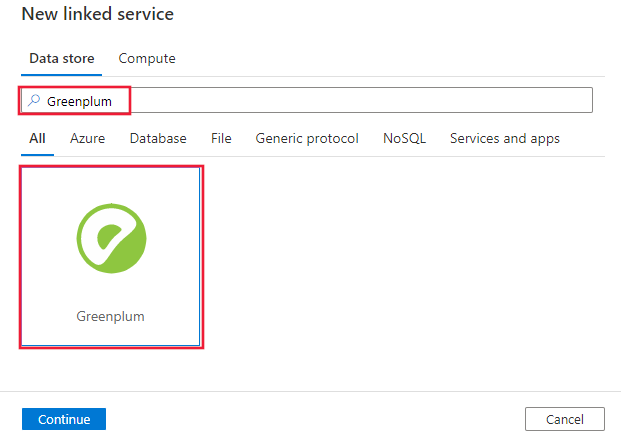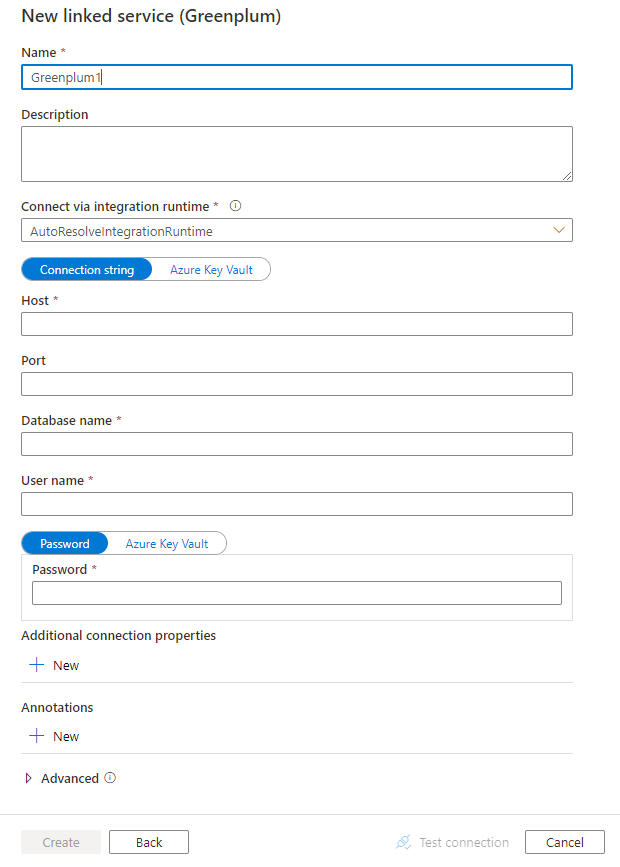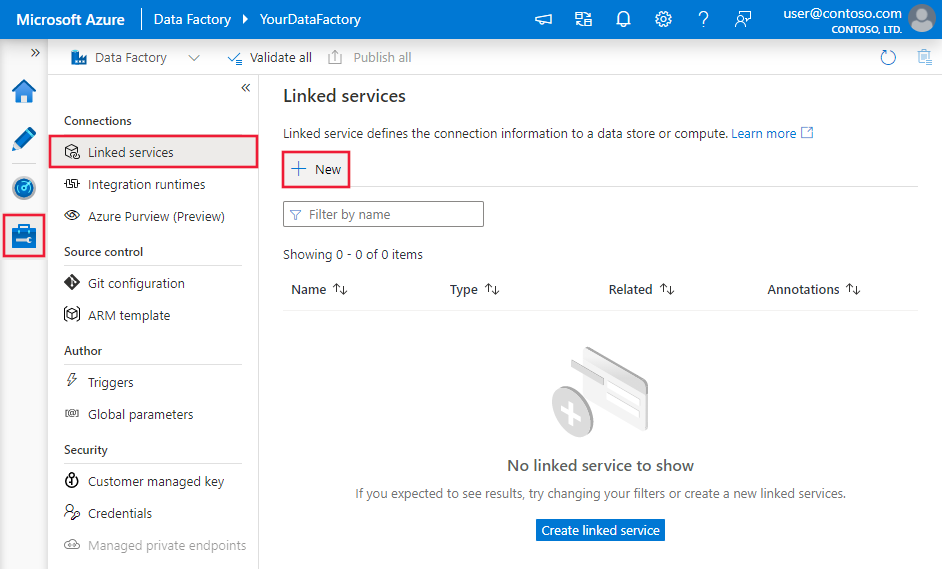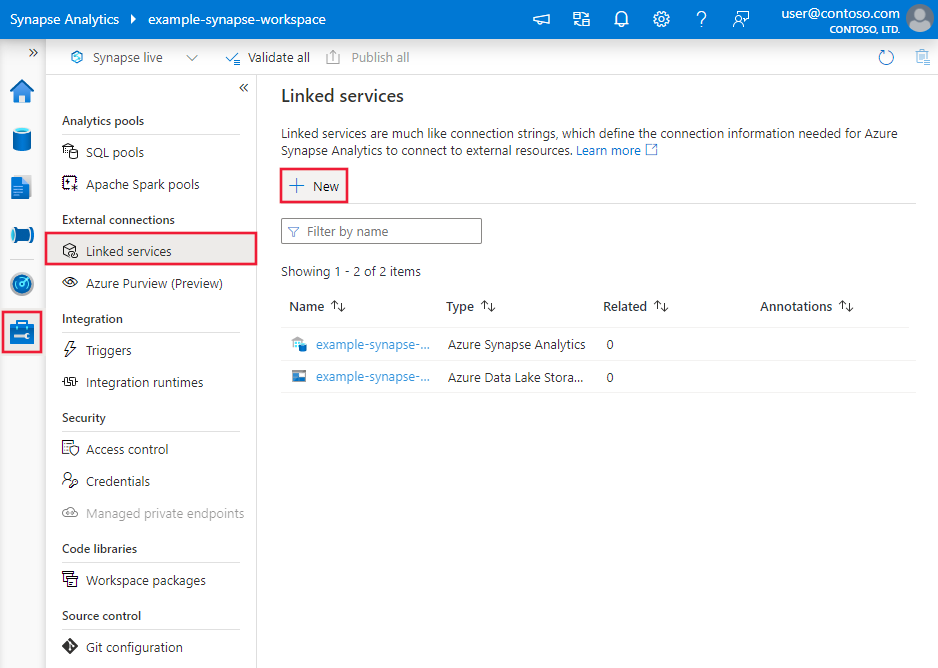Note
Access to this page requires authorization. You can try signing in or changing directories.
Access to this page requires authorization. You can try changing directories.
APPLIES TO:  Azure Data Factory
Azure Data Factory  Azure Synapse Analytics
Azure Synapse Analytics
Tip
Try out Data Factory in Microsoft Fabric, an all-in-one analytics solution for enterprises. Microsoft Fabric covers everything from data movement to data science, real-time analytics, business intelligence, and reporting. Learn how to start a new trial for free!
This article outlines how to use the Copy Activity in an Azure Data Factory or Synapse Analytics pipeline to copy data from Greenplum. It builds on the copy activity overview article that presents a general overview of copy activity.
Important
The Greenplum connector version 2.0 provides improved native Greenplum support. If you are using Greenplum connector version 1.0 in your solution, please upgrade the Greenplum connector before August 31, 2025. Refer to this section for details on the difference between version 2.0 and version 1.0.
Supported capabilities
This Greenplum connector is supported for the following capabilities:
| Supported capabilities | IR |
|---|---|
| Copy activity (source/-) | ① ② |
| Lookup activity | ① ② |
① Azure integration runtime ② Self-hosted integration runtime
For a list of data stores that are supported as sources/sinks by the copy activity, see the Supported data stores table.
The service provides a built-in driver to enable connectivity, therefore you don't need to manually install any driver using this connector.
Prerequisites
If your data store is located inside an on-premises network, an Azure virtual network, or Amazon Virtual Private Cloud, you need to configure a self-hosted integration runtime to connect to it.
If your data store is a managed cloud data service, you can use the Azure Integration Runtime. If the access is restricted to IPs that are approved in the firewall rules, you can add Azure Integration Runtime IPs to the allow list.
You can also use the managed virtual network integration runtime feature in Azure Data Factory to access the on-premises network without installing and configuring a self-hosted integration runtime.
For more information about the network security mechanisms and options supported by Data Factory, see Data access strategies.
Getting started
To perform the Copy activity with a pipeline, you can use one of the following tools or SDKs:
- The Copy Data tool
- The Azure portal
- The .NET SDK
- The Python SDK
- Azure PowerShell
- The REST API
- The Azure Resource Manager template
Create a linked service to Greenplum using UI
Use the following steps to create a linked service to Greenplum in the Azure portal UI.
Browse to the Manage tab in your Azure Data Factory or Synapse workspace and select Linked Services, then click New:
Search for Greenplum and select the Greenplum connector.

Configure the service details, test the connection, and create the new linked service.

Connector configuration details
The following sections provide details about properties that are used to define Data Factory entities specific to Greenplum connector.
Linked service properties
The Greenplum connector now supports version 2.0. Refer to this section to upgrade your Greenplum connector version from version 1.0. For the property details, see the corresponding sections.
Version 2.0
The Greenplum linked service supports the following properties when apply version 2.0:
| Property | Description | Required |
|---|---|---|
| type | The type property must be set to: Greenplum | Yes |
| version | The version that you specify. The value is 2.0. |
Yes |
| host | Specifies the host name - and optionally port - on which database is running. | Yes |
| port | The TCP port of the database server. The default value is 5432. |
No |
| database | The database to connect to. | Yes |
| username | The username to connect with. Not required if using IntegratedSecurity. | Yes |
| password | The password to connect with. Not required if using IntegratedSecurity. Mark this field as SecureString to store it securely. Or, you can reference a secret stored in Azure Key Vault. | Yes |
| sslMode | Controls whether SSL is used, depending on server support. - Disable: SSL is disabled. If the server requires SSL, the connection will fail. - Allow: Prefer non-SSL connections if the server allows them, but allow SSL connections. - Prefer: Prefer SSL connections if the server allows them, but allow connections without SSL. - Require: Fail the connection if the server doesn't support SSL. - Verify-ca: Fail the connection if the server doesn't support SSL. Also verifies server certificate. - Verify-full: Fail the connection if the server doesn't support SSL. Also verifies server certificate with host's name. Options: Disable (0) / Allow (1) / Prefer (2) / Require (3) (Default) / Verify-ca (4) / Verify-full (5) |
Yes |
| authenticationType | Authentication type for connecting to the database. Only supports Basic. | Yes |
| connectVia | The Integration Runtime to be used to connect to the data store. Learn more from Prerequisites section. If not specified, it uses the default Azure Integration Runtime. | No |
| Additional connection properties: | ||
| connectionTimeout | The time to wait (in seconds) while trying to establish a connection before terminating the attempt and generating an error. The default value is 15. |
No |
| commandTimeout | The time to wait (in seconds) while trying to execute a command before terminating the attempt and generating an error. Set to zero for infinity. The default value is 30. |
No |
Example:
{
"name": "GreenplumLinkedService",
"properties": {
"type": "Greenplum",
"version": "2.0",
"typeProperties": {
"host": "<host>",
"port": 5432,
"database": "<database>",
"username": "<username>",
"password": {
"type": "SecureString",
"value": "<password>"
},
"sslMode": <sslmode>,
"authenticationType": "Basic"
},
"connectVia": {
"referenceName": "<name of Integration Runtime>",
"type": "IntegrationRuntimeReference"
}
}
}
Example: store password in Azure Key Vault
{
"name": "GreenplumLinkedService",
"properties": {
"type": "Greenplum",
"version": "2.0",
"typeProperties": {
"host": "<host>",
"port": 5432,
"database": "<database>",
"username": "<username>",
"password": {
"type": "AzureKeyVaultSecret",
"store": {
"referenceName": "<Azure Key Vault linked service name>",
"type": "LinkedServiceReference"
},
"secretName": "<secretName>"
},
"sslMode": <sslmode>,
"authenticationType": "Basic"
},
"connectVia": {
"referenceName": "<name of Integration Runtime>",
"type": "IntegrationRuntimeReference"
}
}
}
Version 1.0
The Greenplum linked service supports the following properties when apply version 1.0:
| Property | Description | Required |
|---|---|---|
| type | The type property must be set to: Greenplum | Yes |
| connectionString | An ODBC connection string to connect to Greenplum. You can also put password in Azure Key Vault and pull the pwd configuration out of the connection string. Refer to the following samples and Store credentials in Azure Key Vault article with more details. |
Yes |
| connectVia | The Integration Runtime to be used to connect to the data store. Learn more from Prerequisites section. If not specified, it uses the default Azure Integration Runtime. | No |
Example:
{
"name": "GreenplumLinkedService",
"properties": {
"type": "Greenplum",
"typeProperties": {
"connectionString": "HOST=<server>;PORT=<port>;DB=<database>;UID=<user name>;PWD=<password>"
},
"connectVia": {
"referenceName": "<name of Integration Runtime>",
"type": "IntegrationRuntimeReference"
}
}
}
Example: store password in Azure Key Vault
{
"name": "GreenplumLinkedService",
"properties": {
"type": "Greenplum",
"typeProperties": {
"connectionString": "HOST=<server>;PORT=<port>;DB=<database>;UID=<user name>;",
"pwd": {
"type": "AzureKeyVaultSecret",
"store": {
"referenceName": "<Azure Key Vault linked service name>",
"type": "LinkedServiceReference"
},
"secretName": "<secretName>"
}
},
"connectVia": {
"referenceName": "<name of Integration Runtime>",
"type": "IntegrationRuntimeReference"
}
}
}
Dataset properties
For a full list of sections and properties available for defining datasets, see the datasets article. This section provides a list of properties supported by Greenplum dataset.
To copy data from Greenplum, set the type property of the dataset to GreenplumTable. The following properties are supported:
| Property | Description | Required |
|---|---|---|
| type | The type property of the dataset must be set to: GreenplumTable | Yes |
| schema | Name of the schema. | No (if "query" in activity source is specified) |
| table | Name of the table. | No (if "query" in activity source is specified) |
| tableName | Name of the table with schema. This property is supported for backward compatibility. Use schema and table for new workload. |
No (if "query" in activity source is specified) |
Example
{
"name": "GreenplumDataset",
"properties": {
"type": "GreenplumTable",
"typeProperties": {},
"schema": [],
"linkedServiceName": {
"referenceName": "<Greenplum linked service name>",
"type": "LinkedServiceReference"
}
}
}
Copy activity properties
For a full list of sections and properties available for defining activities, see the Pipelines article. This section provides a list of properties supported by Greenplum source.
GreenplumSource as source
To copy data from Greenplum, set the source type in the copy activity to GreenplumSource. The following properties are supported in the copy activity source section:
| Property | Description | Required |
|---|---|---|
| type | The type property of the copy activity source must be set to: GreenplumSource | Yes |
| query | Use the custom SQL query to read data. For example: "SELECT * FROM MyTable". |
No (if "tableName" in dataset is specified) |
Example:
"activities":[
{
"name": "CopyFromGreenplum",
"type": "Copy",
"inputs": [
{
"referenceName": "<Greenplum input dataset name>",
"type": "DatasetReference"
}
],
"outputs": [
{
"referenceName": "<output dataset name>",
"type": "DatasetReference"
}
],
"typeProperties": {
"source": {
"type": "GreenplumSource",
"query": "SELECT * FROM MyTable"
},
"sink": {
"type": "<sink type>"
}
}
}
]
Data type mapping for Greenplum
When you copy data from Greenplum, the following mappings apply from Greenplum's data types to the internal data types used by the service. To learn about how the copy activity maps the source schema and data type to the sink, see Schema and data type mappings.
| Greenplum data type | Interim service data type (for version 2.0) | Interim service data type (for version 1.0) |
|---|---|---|
| SmallInt | Int16 | Int16 |
| Integer | Int32 | Int32 |
| BigInt | Int64 | Int64 |
| Decimal (Precision <= 28) | Decimal | Decimal |
| Decimal (Precision > 28) | Decimal | String |
| Numeric | Decimal | Decimal |
| Real | Single | Single |
| Double | Double | Double |
| SmallSerial | Int16 | Int16 |
| Serial | Int32 | Int32 |
| BigSerial | Int64 | Int64 |
| Money | Decimal | String |
| Char | String | String |
| Varchar | String | String |
| Text | String | String |
| Bytea | Byte[] | Byte[] |
| Timestamp | DateTime | DateTime |
| Timestamp with time zone | DateTimeOffset | String |
| Date | Date | DateTime |
| Time | TimeSpan | TimeSpan |
| Time with time zone | DateTimeOffset | String |
| Interval | TimeSpan | String |
| Boolean | Boolean | Boolean |
| Point | String | String |
| Line | String | String |
| Iseg | String | String |
| Box | String | String |
| Path | String | String |
| Polygon | String | String |
| Circle | String | String |
| Cidr | String | String |
| Inet | String | String |
| Macaddr | String | String |
| Macaddr8 | String | String |
| Tsvector | String | String |
| Tsquery | String | String |
| UUID | Guid | Guid |
| Json | String | String |
| Jsonb | String | String |
| Array | String | String |
| Bit | Byte[] | Byte[] |
| Bit varying | Byte[] | Byte[] |
| XML | String | String |
| IntArray | String | String |
| TextArray | String | String |
| NumericArray | String | String |
| DateArray | String | String |
| Range | String | String |
| Bpchar | String | String |
Lookup activity properties
To learn details about the properties, check Lookup activity.
Upgrade the Greenplum connector
Here are steps that help you upgrade your Greenplum connector:
In Edit linked service page, select version 2.0 and configure the linked service by referring to linked service version 2.0 properties.
The data type mapping for the Greenplum linked service version 2.0 is different from that for the version 1.0. To learn the latest data type mapping, see Data type mapping for Greenplum.
Differences between Greenplum version 2.0 and version 1.0
The Greenplum connector version 2.0 offers new functionalities and is compatible with most features of version 1.0. The table below shows the feature differences between version 2.0 and version 1.0.
| Version 2.0 | Version 1.0 |
|---|---|
| The following mappings are used from Greenplum data types to interim service data type. Decimal (Precision > 28) -> Decimal Money -> Decimal Timestamp with time zone -> DateTimeOffset Time with time zone -> DateTimeOffset Interval -> TimeSpan |
The following mappings are used from Greenplum data types to interim service data type. Decimal (Precision > 28) -> String Money -> String Timestamp with time zone ->String Time with time zone -> String Interval -> String |
Related content
For a list of data stores supported as sources and sinks by the copy activity, see supported data stores.

